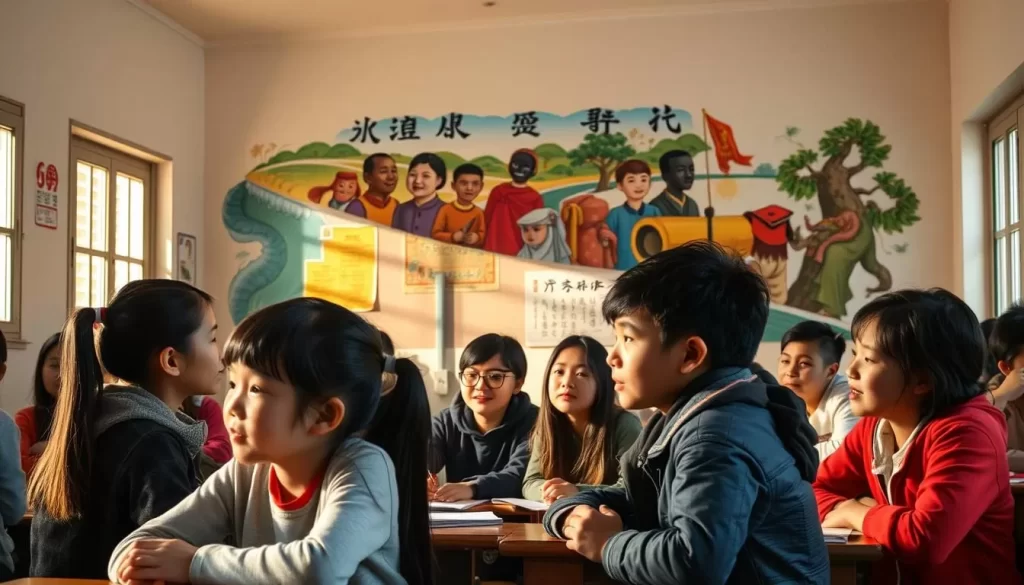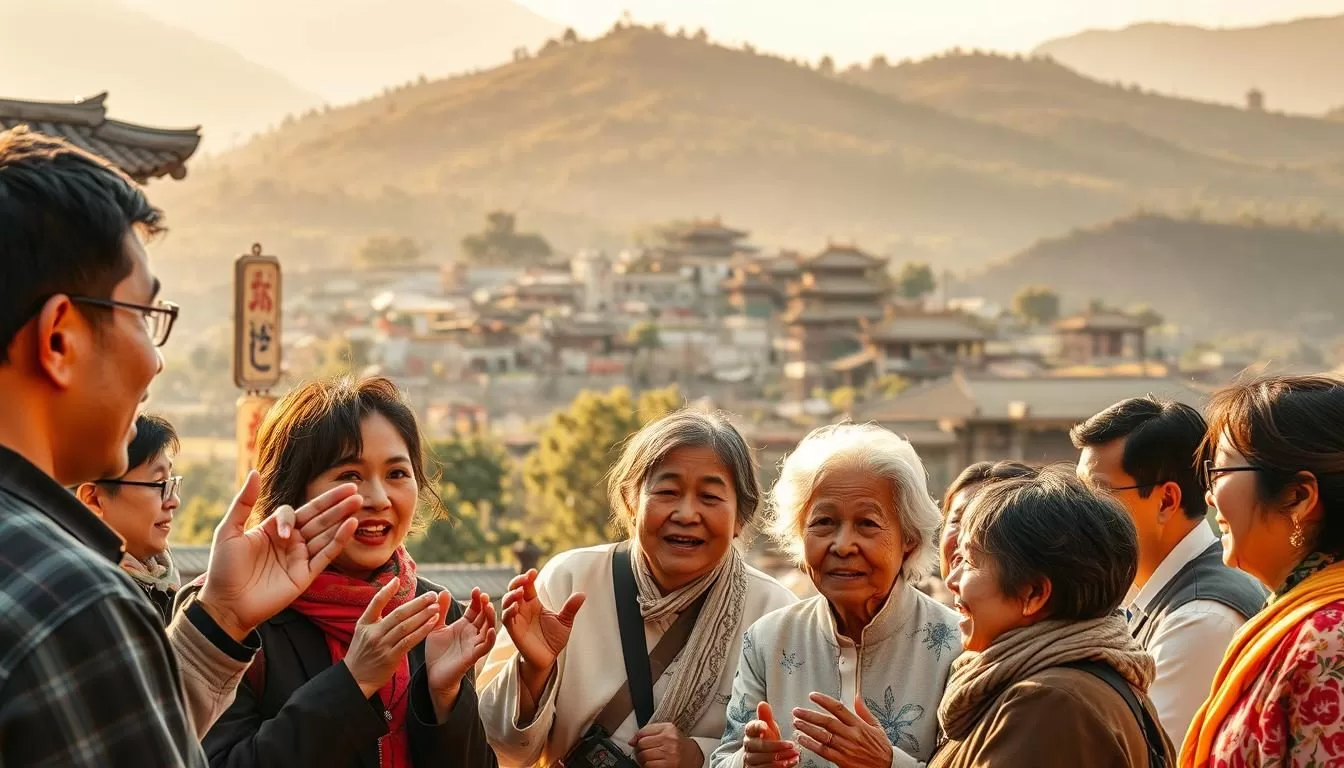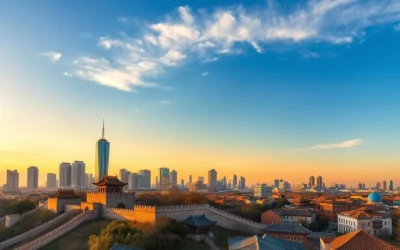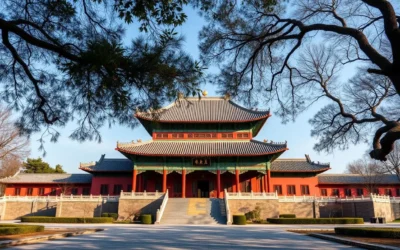✓ Accommodations ✓ Flights ✓ Rental Cars
Henan is a region rich in history and culture, often referred to as the cradle of Chinese civilization. Its ancient capitals, such as Luoyang and Kaifeng, have played a significant role in shaping the area’s linguistic landscape. Today, this vibrant region is home to a diverse population that speaks a variety of dialects and languages.
Mandarin, the official language, is the most widely used dialect here. With over 1 billion speakers globally, it serves as a unifying force across the country. In addition to Mandarin, Jinyǔ, a regional dialect, is spoken by approximately 46 million people, primarily in this area and neighboring regions.
The linguistic diversity in this region is a reflection of its long history and cultural evolution. From ancient dynasties to modern cities, the development of language has been influenced by migration, geography, and tradition. This makes it a fascinating subject for anyone interested in the Chinese language and its many forms.
Overview of Henan’s Rich Language Heritage
Language in this area is a living testament to centuries of cultural evolution. Its history is deeply rooted in ancient dynasties and geographic influences. These factors have shaped the unique linguistic identity you see today.
Understanding Henan’s Historical and Cultural Context
The region’s language has evolved through time, influenced by its role as a cultural hub. Ancient capitals like Kaifeng and Luoyang were centers of learning and trade. This fostered a rich environment for dialect development and linguistic diversity.
For example, relics from the Shang Dynasty highlight early forms of communication. These artifacts provide insight into the relationship between language and culture. Today, this heritage continues to influence the way people speak and interact.
“The story of language here is not just about words; it’s about the people and their history.”
Key Regions and Their Linguistic Significance
Different areas within the region have distinct linguistic features. Kaifeng, for instance, is known for its unique variant of Mandarin. This reflects its historical role as a major city during the Song Dynasty.
Zhengzhou, another key city, serves as a modern hub for education and innovation. Its population of over 6 million speaks a blend of traditional and contemporary dialects. This mix highlights the ongoing development of language in urban settings.
| City | Linguistic Feature | Historical Influence |
|---|---|---|
| Kaifeng | Unique Mandarin variant | Song Dynasty |
| Zhengzhou | Blend of traditional and modern dialects | Modern education hub |
These examples show how geography and history shape the way people communicate. Whether in a bustling city or a rural village, language remains a vital part of daily life.
Historical Background Shaping Henan’s Languages
The roots of language in this area stretch back to prehistoric times, shaped by ancient cultures and dynasties. Early settlements like the Yangshao and Longshan laid the foundation for communication. These groups developed early forms of writing and symbols, which influenced later dialects.

During the Shang Dynasty, around 1300 BCE, the king Pangeng moved the capital near Anyang. This marked a significant step in the development of the Chinese language. The Zhou Dynasty, which followed, further standardized communication across the region.
Prehistoric Influences and Ancient Dynasties
Prehistoric cultures played a crucial role in shaping the linguistic landscape. Artifacts from these periods reveal early forms of writing and symbols. These discoveries highlight the connection between culture and language.
The Shang Dynasty introduced oracle bone script, one of the earliest writing systems. This innovation allowed for better record-keeping and communication. It also set the stage for future linguistic development.
The Evolution from the Shang Dynasty to Modern Times
From the Shang to the Zhou Dynasty, language evolved significantly. The Zhou period saw the rise of standardized scripts and diplomatic exchanges. Luoyang, a key city, served as a cultural hub during multiple dynasties.
Over time, these ancient forms of communication influenced modern dialects. Today, you can see traces of this rich history in the way people speak. The continuous evolution of language reflects the dynamic nature of culture.
“The past is not just a memory; it’s a living part of how we communicate today.”
Henan Province, China: Official and widely spoken languages
The linguistic landscape here is shaped by both tradition and modernity. Standard Mandarin, the official language, serves as a unifying force across the region. It is promoted in schools and public spaces, ensuring clear communication among diverse communities.
Standard Mandarin’s role in the province
Mandarin is spoken by over 800 million people nationwide, making it the most widely used dialect. In this area, it bridges cultural and regional differences, fostering unity. Government policies actively encourage its use, especially in education and media.
For example, schools prioritize Mandarin to prepare students for national opportunities. This approach ensures that the language remains a vital tool for social and economic progress.
Regional dialects and local language variations
Alongside Mandarin, regional dialects thrive in everyday life. Jinyǔ, for instance, is spoken by millions, preserving local identity. These variations reflect the area’s rich history and cultural diversity.
In cities like Kaifeng and Zhengzhou, you’ll hear a blend of traditional and modern speech patterns. This coexistence highlights the dynamic nature of language in urban settings.
“Language is not just a means of communication; it’s a bridge to understanding culture and heritage.”
From ancient scripts to modern speech, the Chinese language continues to evolve. This region’s linguistic diversity is a testament to its enduring legacy.
Diverse Dialects and Minority Languages in Henan
The linguistic diversity in this region is shaped by centuries of migration and isolation. Ethnic communities have preserved their unique dialects, creating a vibrant tapestry of language and culture. From the Hakka to the Tibetan-speaking groups, each community contributes to the rich linguistic heritage.

Ethnic Communities and Their Unique Languages
Ethnic groups like the Hakka and Tibetan communities have maintained their language traditions for generations. For example, Hakka is spoken by over 38 million people, primarily in southern regions. These dialects are not just a means of communication but a reflection of identity and history.
In this area, the Tibetan-speaking population adds another layer of diversity. With around 6 million speakers, Tibetan remains a vital part of their cultural heritage. These minority languages showcase the deep relationship between language and community.
The Impact of Migration and Isolation
Migration has introduced new linguistic elements, while isolation has helped preserve unique dialects. For instance, the Jin dialect, spoken by around 33 million people, thrives in areas with limited external influence. This balance between movement and seclusion has shaped the region’s linguistic landscape.
Geographic barriers, like mountains, have also played a role. They have protected minority languages from being overshadowed by the official language. This has allowed smaller groups to maintain their linguistic identity over time.
“Language is more than words; it’s a bridge to understanding the soul of a community.”
Maintaining this diversity comes with challenges. Rapid modernization often threatens minority languages. However, efforts to preserve these dialects ensure that future generations can connect with their roots. The blend of tradition and change makes this region a fascinating study in linguistic evolution.
Imperial Eras and Their Linguistic Legacies
The imperial eras of Qin, Han, and Tang dynasties left an indelible mark on the evolution of language. These periods were not just about political power; they shaped the way people communicated, wrote, and preserved their culture. From state policies to cultural patronage, the influence of these dynasties is still felt today.
Language Development During the Qin, Han, and Tang Dynasties
The Qin Dynasty (221–206 BCE) standardized writing, creating a unified system that bridged regional differences. This was a turning point for the Chinese language, as it laid the foundation for modern communication. The Han Dynasty (206 BCE–220 CE) further advanced this by promoting literacy and education.
During the Tang Dynasty (618–907 CE), poetry and literature flourished, enriching the language with new expressions and styles. These eras not only developed the dialect but also preserved it through written records, ensuring its survival for future generations.
Legacy of Historical Capitals and Cultural Centers
Historical capitals like Luoyang and Kaifeng were epicenters of linguistic innovation. Luoyang, during the Zhou Dynasty, became a hub for scholars and writers. Kaifeng, under the Song Dynasty, saw the rise of vernacular language, making it more accessible to the masses.
These cities fostered cultural exchange, blending local dialects with the official language. This created a rich linguistic tapestry that continues to influence modern speech patterns. The legacy of these capitals is a testament to their role in shaping the history of communication.
“The words we speak today are echoes of the past, shaped by centuries of innovation and tradition.”
From the Qin Dynasty’s standardization to the Tang Dynasty’s literary achievements, the imperial eras have left a lasting legacy. Understanding this history helps you appreciate the depth and diversity of the Chinese language.
Geography’s Influence on Henan’s Language Landscape
Geography plays a pivotal role in shaping the way people communicate across this region. From the fertile plains to the rugged mountains, natural features have left a lasting mark on local dialects and language diversity. Understanding these influences helps you appreciate the rich tapestry of speech patterns found here.

The Role of the Yellow River and Fertile Plains
The Yellow River, often called the cradle of civilization, has been a lifeline for communities in this area. Its fertile plains have supported agriculture, fostering cultural and linguistic exchanges. These interactions have led to the blending of dialects, creating unique regional variations.
For example, the river’s central location has made it a hub for trade and migration. This has allowed different language forms to merge, enriching the local culture. The result is a vibrant linguistic landscape that reflects centuries of interaction.
How Mountains and Geographic Isolation Affect Dialects
Mountainous regions, on the other hand, have acted as natural barriers. These geographic features have isolated communities, allowing distinct dialects to develop over time. In these areas, you’ll find speech patterns that differ significantly from those in the plains.
For instance, the Loess Plateau has preserved traditional language forms that might have disappeared elsewhere. This isolation has also protected minority dialects, ensuring their survival in a rapidly modernizing country.
“Geography doesn’t just shape the land; it shapes the way we speak and connect with one another.”
Whether it’s the fertile plains or the rugged mountains, geography has played a crucial role in the development of language in this region. To learn more about how geography influences linguistic diversity, explore this resource.
Comparing Henan’s Linguistic Diversity with Broader Chinese Variants
Exploring the linguistic diversity of this region reveals fascinating contrasts with broader Chinese variants. The interplay between Standard Mandarin and local dialects offers a unique perspective on language evolution. This comparison highlights both unity and diversity in communication.
Mandarin vs. Local Dialects: Similarities and Differences
Standard Mandarin, the official language, serves as a unifying force across the country. It is spoken by over 800 million people, making it the most widely used dialect. In this area, it bridges cultural and regional differences, fostering unity.
Local dialects, like Jinyǔ, preserve unique identities. These variations reflect the area’s rich history and cultural diversity. For example, while Mandarin is standardized in writing, local dialects often have distinct phonetic differences.
Insights from Other Major Chinese Language Families
The Chinese language encompasses over 300 languages and dialects, spoken by 1.3 billion people globally. This vast family includes major groups like Wu, Yue, and Min, each with millions of speakers.
In this region, the relationship between Mandarin and local dialects mirrors broader national trends. For instance, the Jin dialect, spoken by 63 million people, thrives in northern areas. This blend of tradition and modernity showcases the dynamic nature of language.
“Language is not just a means of communication; it’s a bridge to understanding culture and heritage.”
From ancient scripts to modern speech, the Chinese language continues to evolve. This region’s linguistic diversity is a testament to its enduring legacy. To learn more about the development of language, explore this resource.
Education, Language Policy, and Cultural Preservation in Henan
Education plays a vital role in shaping the linguistic identity of a region. In this area, language policies aim to balance national unity with cultural diversity. The focus is on promoting Standard Mandarin while preserving local dialects and minority languages.

Promotion of Standard Mandarin in Public Education
Standard Mandarin is the primary medium of instruction in schools. This ensures that students can communicate effectively across the country. Government initiatives have increased Mandarin literacy rates to 97%.
Schools prioritize Mandarin to prepare students for national opportunities. This approach fosters unity and social progress. It also helps bridge cultural and regional differences.
Efforts to Support Regional Languages and Dialects
While Mandarin is emphasized, local dialects are not forgotten. Programs aim to preserve minority languages like Hakka, spoken by 20% of the population. These efforts ensure that cultural heritage remains intact.
Government funding for minority language education has increased by 25% over the past five years. This supports bilingual education initiatives, helping communities maintain their linguistic identity.
“Language is not just a tool for communication; it’s a bridge to understanding culture and heritage.”
| Initiative | Impact | Outcome |
|---|---|---|
| Mandarin Promotion | Increased literacy rates | National unity |
| Minority Language Support | Preservation of dialects | Cultural diversity |
These initiatives highlight the importance of language education in maintaining cultural heritage. To learn more about language policy in education, explore this resource.
Key Cities and Their Unique Linguistic Features
The major cities of this region offer a fascinating glimpse into the interplay between history and modern linguistic trends. Each city has its own distinct language characteristics, shaped by centuries of cultural evolution and urban development.
Exploring Zhengzhou, Kaifeng, and Luoyang
Zhengzhou, the capital, is a hub of modern communication. Here, Standard Mandarin dominates, but you’ll also hear traces of local dialects. The city’s rapid growth has led to a blend of traditional and contemporary speech patterns.
Kaifeng, known for its historical significance, preserves unique linguistic traits. Its language reflects its role as a cultural center during the Song Dynasty. Today, residents mix ancient expressions with modern vocabulary.
Luoyang, another key city, showcases the influence of ancient capitals on language. Its speech patterns are a testament to its rich history, blending classical forms with urban innovations.
Urban Influences on Language Use Today
Urbanization has transformed how people communicate in these cities. Economic growth and migration have introduced new dialects and accents. This has created a dynamic linguistic landscape that continues to evolve.
For example, Zhengzhou’s tech industry attracts professionals from across the country. This has led to the adoption of new language trends, blending regional and national influences.
In Kaifeng and Luoyang, tourism plays a significant role. Visitors bring their own speech patterns, enriching the local dialects. This interaction highlights the adaptability of language in urban settings.
“Language is a living entity, constantly shaped by the people and places it touches.”
| City | Linguistic Feature | Modern Influence |
|---|---|---|
| Zhengzhou | Blend of Mandarin and local dialects | Tech industry and migration |
| Kaifeng | Historical expressions | Tourism and cultural preservation |
| Luoyang | Classical speech patterns | Urban innovation |
These cities illustrate how language adapts to changing environments. From ancient capitals to modern hubs, the evolution of speech reflects the region’s dynamic history. To learn more about linguistic diversity, explore this resource.
Conclusion
The story of language in this region is a journey through time, shaped by dynasties and geography. From ancient capitals to modern cities, the evolution of speech reflects a rich cultural legacy. Standard Mandarin unites communities, while local dialects preserve unique identities.
This diversity is a testament to the enduring influence of history and tradition. Whether in bustling urban centers or remote villages, language remains a vital part of daily life. Efforts to balance national unity with cultural preservation ensure that this heritage thrives.
To explore more about the psychological impact of language evolution, check out this study. Understanding these connections offers deeper insights into the role of communication in shaping societies.
The above is subject to change.
Check back often to TRAVEL.COM for the latest travel tips and deals.






